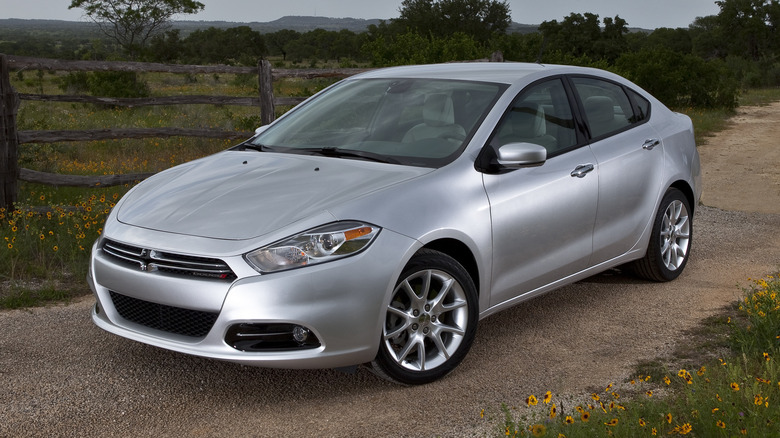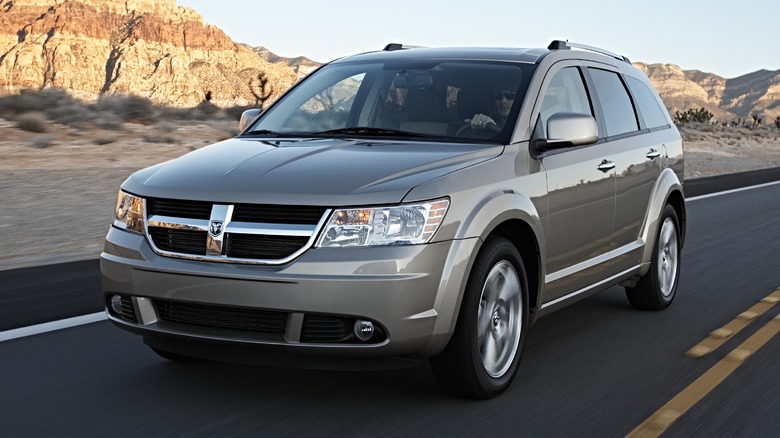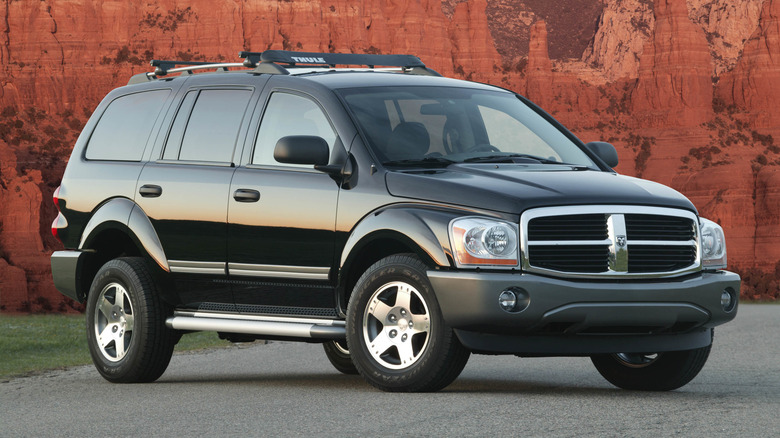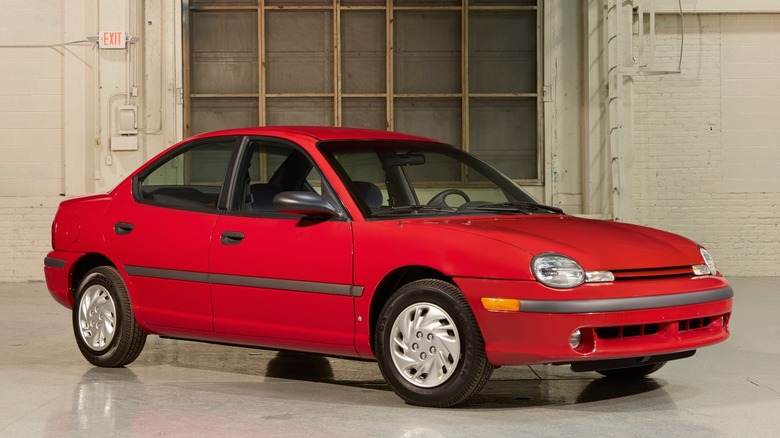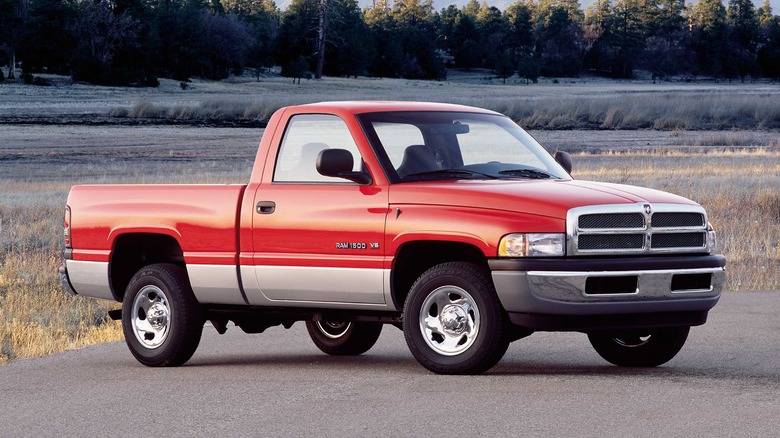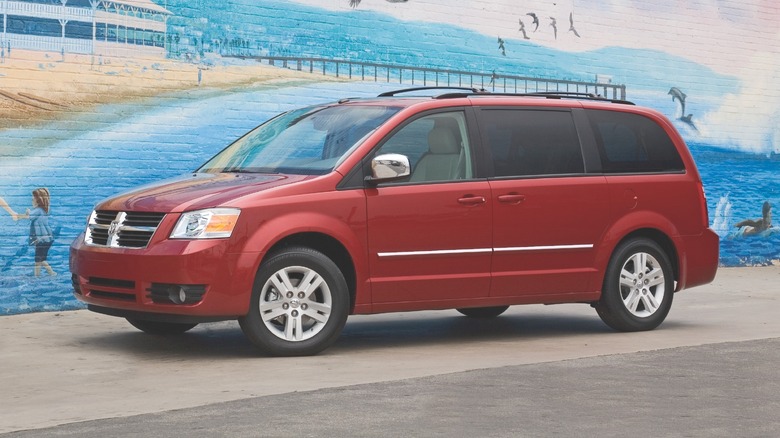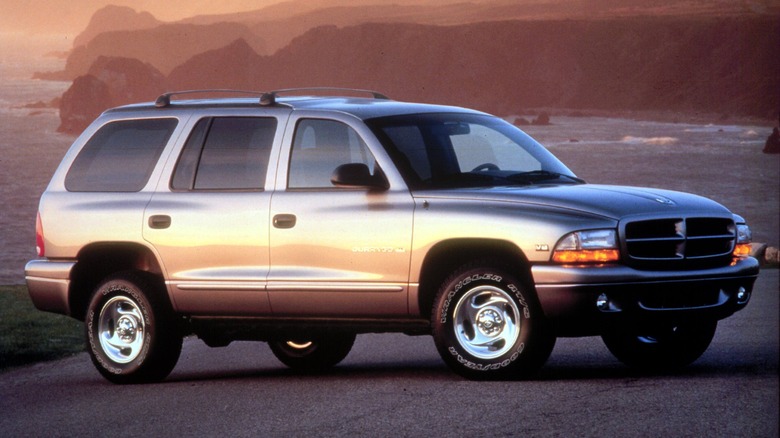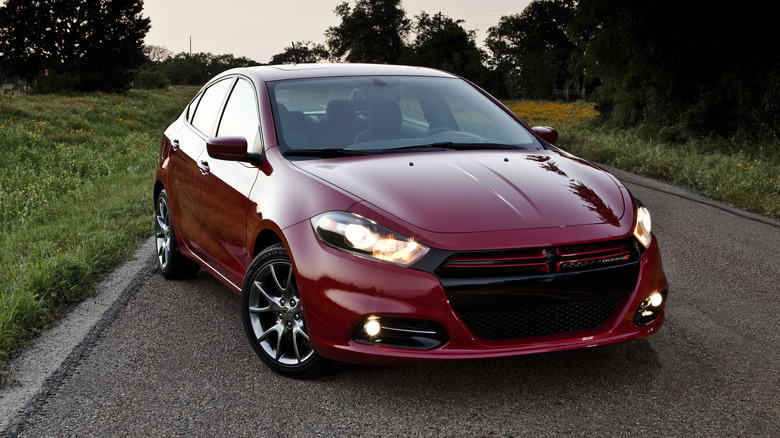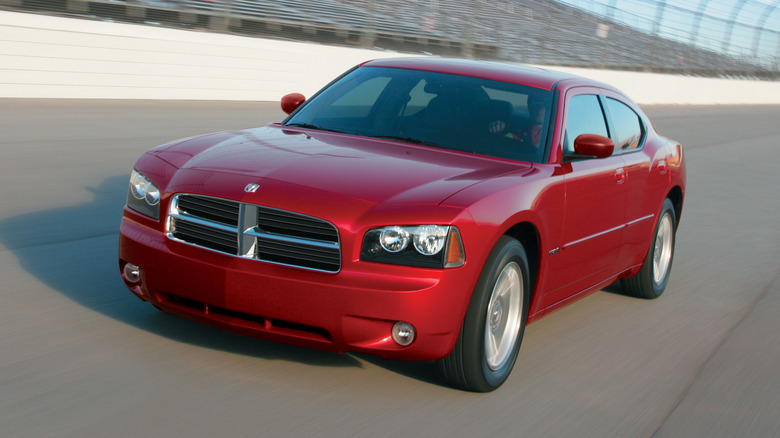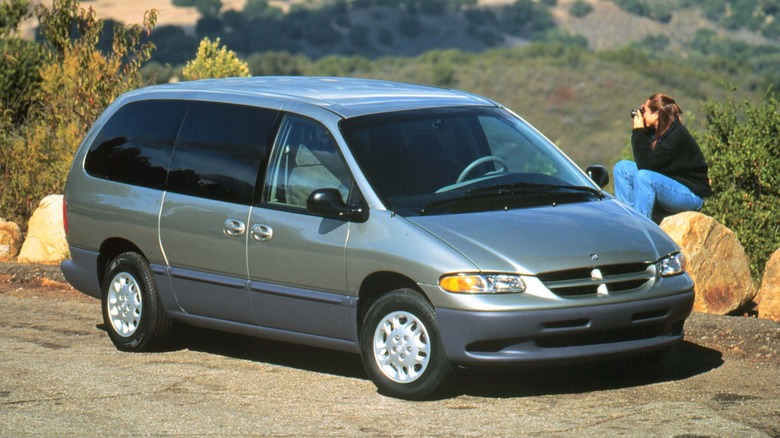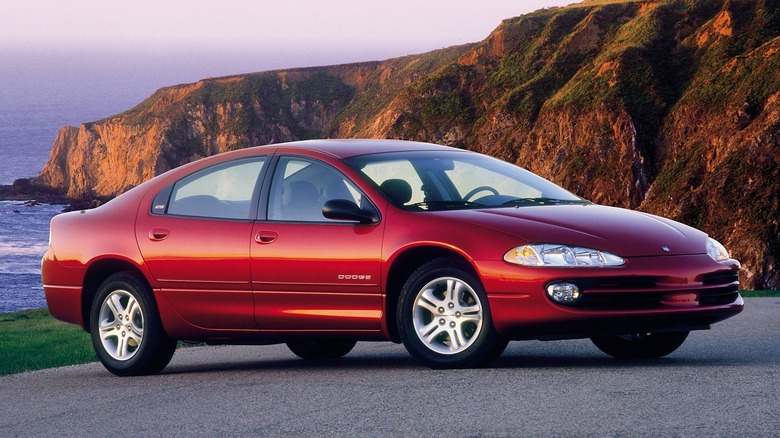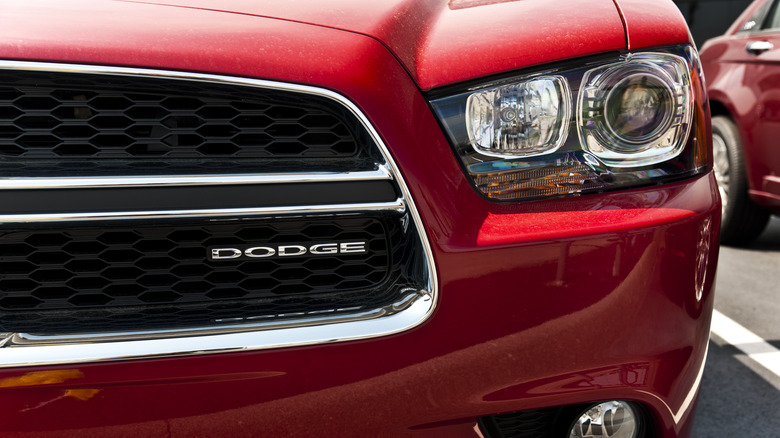10 Used Dodge Models You Should Steer Clear Of At All Costs
The Dodge brand is one of the most recognized in American automotive manufacturing and has been responsible for many iconic cars over the decades. Alongside the highlights, however, there have been plenty of lowlights. Dodge has had its fair share of quality control issues over the years, with some cars in the brand's back catalog being particularly troublesome for owners.
SlashGear used data from the NHTSA's recall and owner complaints database to round up these models that rank among the worst for dependability. This is not an exhaustive list of every Dodge model year with problems, but rather aimed to be a general guide to give used buyers an idea of which cars are worth avoiding. After all, no one wants to spend their hard-earned cash on a car that turns out to be a money pit. Or, even worse, one that turns out to be potentially dangerous to drive.
2009 Dodge Journey
The minivan segment was in decline throughout the mid '00s, and Dodge needed a way to appeal to buyers looking for something a little more on-trend, but just as practical. The brand's answer was the Journey crossover, which debuted for the 2009 model year. It received a lukewarm reception from critics, some of whom pointed out its unremarkable handling and styling in a fiercely competitive segment. Unfortunately for 2009 Journey owners, its reliability record is much less middling — in fact, the car is one of the most troublesome Dodges produced this century.
It's subject to eight recalls according to the NHTSA, with issues concerning everything from a faulty ignition switch to a defective power steering return hose. The agency has also logged over 1,500 owner complaints for the model year, with over 800 concerning the car's electrical systems. Owners have reported electrical faults, including headlights turning on and off by themselves, starter motors repeatedly failing, and even short circuits leading to the car catching fire.
Many report that a faulty TIPM (Totally Integrated Power Module) was found to be the cause, although other drivers report being unable to properly diagnose the problem even after taking it to multiple mechanics. The 2010 Journey also suffers a similarly high level of owner complaints, with a smaller number of owners continuing to report electrical problems for model years as recent as 2017.
2005 Dodge Durango
Several model years of the second generation Dodge Durango fare poorly on complaints according to NHTSA data, with the 2005 Durango the worst of the bunch. It has received over 1,500 owner complaints to date, ahead of the 2004 Durango, which has received over 1,100 complaints. It has also been subject to nine recalls, ranging from faulty wiring to a malfunctioning valve in the fuel tank. The latter issue seems to persist among Durango owners despite the recall, with over 500 owner complaints concerning the problem. The two recalls involving fuel tank components were issued in 2005 and 2009, but drivers have reported issues as recently as 2023.
Other issues reportedly affecting the 2005 Durango include partial or total transmission failure, with over 200 owners alleging powertrain issues of some kind. Many cite the car's four-wheel-drive system as the culprit. The SUV is also the subject of two active NHTSA investigations, both involving issues with Takata-supplied airbags. These investigations are wide-ranging and not just limited to the Durango, or indeed Dodge vehicles — in fact, one of the investigations also lists cars from the Jeep Wrangler to the Ferrari LaFerrari as potentially affected models.
1995 Dodge Neon
SlashGear is, in general, a fan of the Dodge Neon — it is one of the Dodge cars most worth resurrecting. It was a cheap, capable runabout that was generally hassle free to own, although not every model year could claim to be the latter. The 1995 model year is the worst offender, with the NHTSA recording nearly 1,200 complaints about the car to date. It's also been the subject of 11 recalls.
The nature of the owner complaints is varied. Over 300 owners reported problems with the engine and cooling systems, and more than 200 complained of issues with the brakes. Electrical systems were also cited over a hundred times, alongside issues with airbag deployment or failure. Given that any 1995 Neon on the market today will likely sport higher mileage and therefore more worn components even without the added reliability issues, it's almost certainly worth giving it a miss.
2001 Dodge Ram 1500
A series of issues have been reported with the 2001 Dodge Ram 1500, with many leading to recalls. The 2001 model year has been subject to 16 recalls according to NHTSA data, with the most recent being a lighting defect identified in 2009. In addition to its recall troubles, the truck has received close to 1,500 complaints from owners, with a large proportion of those concerning the dashboard. Hundreds of owners submitted reports detailing how their trucks' dash disintegrated over time, with many reporting sustaining injuries of various kinds due to sharp pieces of dash plastic.
Some drivers even reported pieces of plastic flying into their eyes while driving, while others say the crumbling dash pieces have caused serious problems with their trucks' electrical systems. Various other issues have also been reported with the powertrain, steering, and brakes, as well as reports of defective airbags as recently as March 2024.
2008 Dodge Grand Caravan
The Dodge Grand Caravan received a thorough revamp for the 2008 model year, with significant improvements made to both its exterior styling and the tech available in its cabin. However, the minivan's persistent reliability issues make it worth avoiding for used buyers today. The NHTSA has recorded over 1,200 complaints regarding the 2008 Grand Caravan as of this writing, plus eight recalls. The majority of owner complaints — over 800 of them — concern the car's electrical systems.
The failure reports paint a similar picture to that of the 2009 Dodge Journey, with drivers alleging that their cars' lights and wipers could randomly turn on or off without warning, often while driving, and electronic door locks could stick either on or off. These faults varied in severity, with some drivers reporting their cars would only occasionally have problems while others deemed their cars completely undrivable. Like the Journey, some owners have traced the problem to a faulty TIPM (Totally Integrated Power Module). However, others report being unable to find the root cause of the issue even after multiple attempted repairs have been completed.
1999 Dodge Durango
With four recalls and over 2,000 owner complaints lodged with the NHTSA, the 1999 Dodge Durango is one of the most complained about Dodge cars on the road today. Over half of those complaints concern the SUV's suspension, particularly its ball joints. A variety of problems have been reported, from defective ball joints causing premature tire wear to partial suspension failure causing steering loss while driving.
Other reports allege problems with the car's engine, with scores of owners claiming that engines would frequently stall while driving. This was most often reported on days when the outside temperature was unusually hot, but some owners also reported the same issue on unusually cold days. Several reports also cite a common error — a "No Bus" warning — linked to the PCM (Powertrain Control Module), but others claim to have replaced the PCM multiple times and still have not fixed the problem. Alongside the 1999 Durango, the 2000 Durango also suffers similar issues, with over 1,100 owner complaints registered with the NHTSA.
2013 Dodge Dart
The Dodge Dart was discontinued not once but twice, with the second iteration of the car killed off due to a lackluster reception from both critics and buyers and subsequent poor sales. The car has attracted an unusually high number of complaints in the years since it was discontinued, with the NHTSA recording over 1,200 complaints to date. Over 500 complaints concern the powertrain, many of which cite transmission failure as their reason for the report. A 2019 recall was issued for the shifter cable bushing, but owners have reported transmission failure as recently as 2024.
Other common complaints include the failure of the clutch pedal, with a defective clutch slave cylinder often cited as the problem. Hundreds of other drivers have had issues with brakes failing, with complaints lodged as recently as 2023 despite a recall being issued for the brake booster in 2015. In total, six recalls have been issued for the car to date, although considering the stream of complaints that have continued pouring into the NHTSA, it seems they haven't been entirely effective in remedying the Dart's flaws.
2006 Dodge Charger
The Dodge Charger is an iconic nameplate with plenty of legendary models in its history, but the 2006 Charger was a mixed bag. It marked the return of the Charger name after decades away, but the new platform suffered significant quality control issues making it best to avoid on the used market today. The NHTSA has recorded five recalls and close to 1,300 complaints as of this writing. Over 300 of those complaints concern the fuel system, with one main problem reported — after filling the tank with gas, owners reported the car's engine repeatedly stalling, often when on the road. A further 300 complaints are categorized as engine issues, although many concern the exact same problem.
Drivers have also reported various problems with the car's electrical systems, many of those involving a sudden loss of power. Airbags are also a common issue, with owners continuing to report defective airbags as recently as 2023 despite two recalls being issued for them in 2015 and 2016. The 2007 and 2008 model year Chargers also recorded an abnormally high number of owner complaints, with roughly 550 and 600 complaints logged respectively. The 2011 and 2012 model years are also troublesome, with more than 600 complaints each.
1996 Dodge Caravan
It might have been one of the most innovative, forward-thinking minivans of its time, but the 1996 Dodge Caravan doesn't hold up for long-term reliability. The NHTSA has logged 1,647 complaints and 18 recalls concerning the minivan to date — with that many recalls it will be extremely difficult for any used buyer to check they've been carried out correctly. Owner complaints are plentiful and varied, with hundreds of owners reporting various electrical issues including persistent dashboard warning lights and gauges malfunctioning.
Another common cause for concern was the car's serpentine belt, which some owners reported replacing multiple times after repeated failure. High oil consumption is also consistently reported, alongside issues with the ABS. Airbags are also reported to be one of the most frequent failure points, with over 250 complaints as of this writing. The issues flagged by owners are most commonly reported in 1996 models, although several following model years also have higher complaints than average.
2000 Dodge Intrepid
The 2000 Dodge Intrepid was let down by its engine, with almost 800 of the 1,094 complaints listed by the NHTSA concerning engine issues. Owners reported consistent problems with the engine's oil levels, with the issue usually occurring at short notice and resulting in significant or terminal engine damage. In many cases, drivers allege the engine seized while they were on the road, with smoke appearing or the car shuddering shortly before the failure.
No recall has been issued regarding the problem, but nine other recalls have been issued over the car's lifespan. Several issues were identified with the safety of the car's seats, with the most recent seat recall launched in 2003 regarding a defective reclining bolt. A 2001 recall was also issued over the vehicle's failure to comply with federal crash protection standards, while a previous recall from 2000 addressed an issue with the brake master cylinder.
Our selection methodology
All of SlashGear's data for compiling this list was sourced from the NHTSA's database. The database covers every Dodge model sold officially in the U.S. from 1990 up to the present day and includes information on recalls, active and past investigations, and owner complaints made to the agency. We considered all three factors when deciding which Dodge models to include, with significantly higher levels of owner complaints than average being the primary criteria for inclusion.
High recall levels were also a secondary criteria, as used buyers often have little information available to them at the point of purchase about whether a car has had recall work completed. A higher number of recalls increases the chance that any given used car has not had one or more of the recalled issues rectified. As noted above, this is not intended to be a definitive guide to every problematic used Dodge model, but rather a general roundup of past model years with notable, well-documented flaws.
